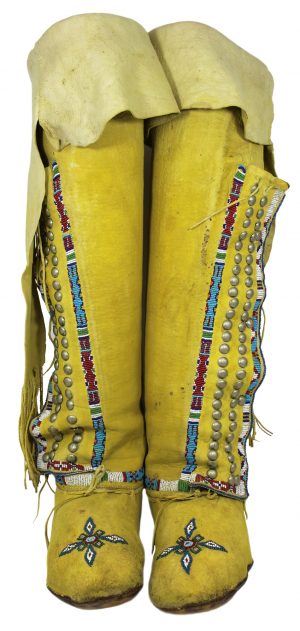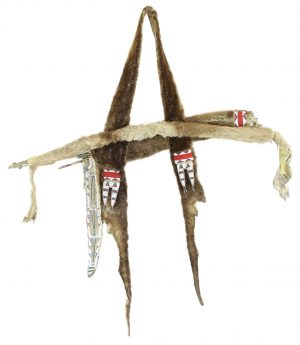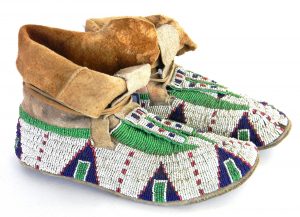





Hidatsa Pipebag and Strike-A-Light
C680
$6,850.00
Native tanned deer hide, rawhide, porcupine quill, Venetian beads, tin cones, dyed horsehair, yellow, and red ochre, German silver button. Sinew and cotton thread. Strike-a-light pouch sewn on one side. Beaded panel, interestingly beaded in flat stitch on one side and lazy stitch on the other. Beaded with different geometric designs on each side. Two vertical rows of beads meet to form triangles above the panel, terminating in tin cone decorations with dyed horsehair tufts and red ochre in the plain field inside the triangle. Strike-a-light with tin cones and a German silver button on the flap. beaded lip and seams. Painted all over in yellow ochre.
Condition: Very good condition. Slight bead loss, one row on seam edge. Quill loss of about 50%.
Circa: 1880











